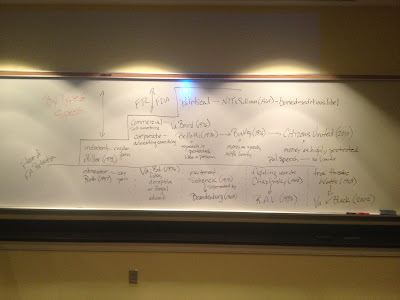 |
| Which freedoms are on display? |
We will ground our discussion of libel law in the history of the civil rights movement. I'll lecture on this theme:
MLK, the Warren Court and Transformation of the First Amendment, and you will relate it to your discoveries in writing about the
March on Washington.
The great
New York Times v. Sullivan (1964) was the most important press case of that era and, indeed, of the 20th century. This is the only case that I will ask you —
and expect you — to read in full this semester. We will spend an entire class period discussing this case, and it will be tested extensively on the third exam. It is
imperative that you read and understand this case.
Start by reading this short history:
Wikipedia entry
The link below is to the
majority opinion by Associate Justice Brennan, who was a First Amendment expert. The link is to the Cornell Law School website, and there, you also can click on "Syllabus" for a short summary of the legal holding in the case. Please also look at the
concurring opinion by Associate Justice Hugo Black.
New York Times v. Sullivan
As an optional reading, you might take a few minutes to scan this short overview article from the First Amendment Center's website:
Libel & Defamation
Study aids: You should print out the extensive
PowerPoint slides on Blackboard. I think it works best to print as a hand-out with three slides per page. You also should faithfully reproduce
The Big Chart, which I'll teach you on the board.
Three-Level Timeline & Race In America Timeline, combined
The brackets at the top represent the portion of my lecture titled "Race, Legal Junctures and Historical Eras." The Three-Level Timeline below charts the major breakthroughs of the Civil Rights Era, with emphasis on important First Amendment cases.
This image picks up the last bit of both timelines.
Behold,
The Big Chart!














